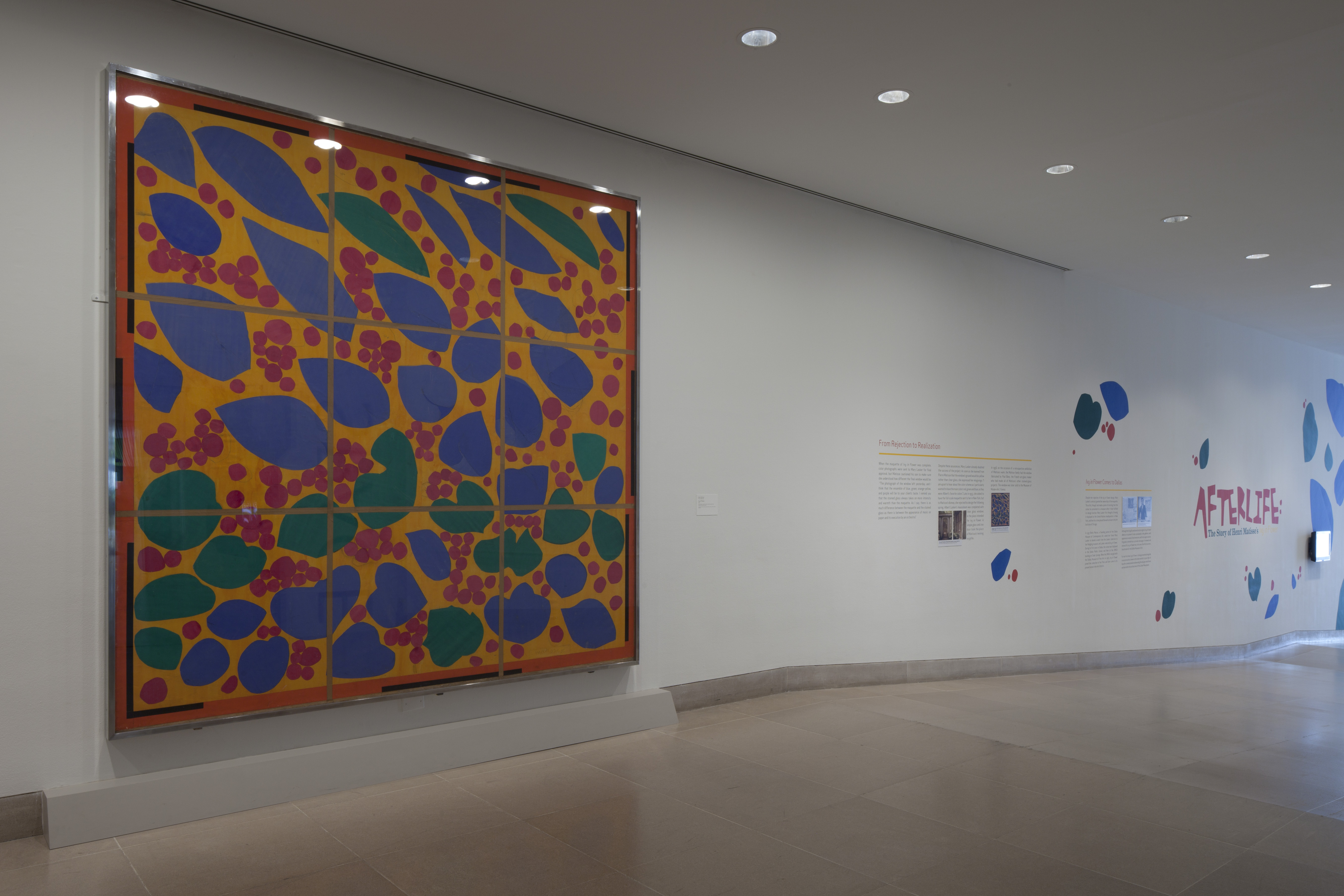If you visit the DMA over the next few months, you can’t miss Henri Matisse’s Ivy in Flower, a colorful collage that measures just over nine feet on each side.
Ivy in Flower is a well-known but rarely seen work of art in the DMA’s collection made with colored paper, watercolor, pencil, and brown paper tape on paper mounted on canvas. In order to preserve and protect a work on paper, the artwork cannot be exposed to light for sustained periods of time. For that reason, Ivy in Flower has only been on view three times in the last ten years, each time for eight months or less. It is usually displayed in the European galleries, which are filled with natural light. This time around, curator Heather MacDonald proposed showcasing the collage in the concourse, where there is not only less light but also plenty of space to tell the interesting history of this work of art.
The story begins with Albert Lasker, who is considered by many to be the father of modern advertising. Lasker began his career as an office clerk at Lord and Thomas advertising agency in Chicago, and became a salesman, then partner, and eventually the president and owner of the company. One of his most notable campaigns was for Lucky Strike cigarettes, which served as inspiration for Don Draper’s character in the television series Mad Men.
After his retirement, Albert Lasker began collecting art with his second wife, Mary Lasker. Following Albert Lasker’s death in 1952, his wife had a mausoleum built for him in Sleepy Hollow Cemetery in New York. Later that year, Mary Lasker commissioned Henri Matisse to design a window for the back wall of the structure, or more precisely, nine windows that would form a ten-by-ten-foot square.
At this time, Matisse was an internationally-known artist late in his career. Due to his poor health, he primarily created compositions by arranging shapes cut from heavy paper that he coated with paint. With the aid of studio assistants, Matisse placed and pinned the shapes until he was satisfied with the composition. For the Lasker commission and other works from this time period, Matisse chose to create a to-scale maquette rather than small-scale preparatory sketches.
Cutting into color reminds me of the sculptor’s direct carving.
– Henri Matisse
After much correspondence between Mary Lasker and Pierre Matisse, the artist’s son, the final design for the window was ultimately rejected. Matisse passed away in 1954, and his family had the window executed in glass for a retrospective exhibition two years later. The window is now owned by The Museum of Modern Art of Vienna. As part of their original agreement, Mary Lasker retained ownership to the Ivy in Flower maquette until she donated it to the Dallas Museum of Contemporary Art (which later merged with the Dallas Museum of Fine Arts, now the Dallas Museum of Art) in 1957.
This is just a short synopsis of the history behind this colorful collage. Afterlife: The Story of Henri Matisse’s Ivy in Flower is on view through December 11, 2011, and includes illustrations of how the mausoleum may have looked with the windows designed by Matisse, as well as images of the people and places in this interesting tale.
Melissa Nelson
Manager of Teaching in the Community

1 Response to “Henri Matisse's Ivy In Flower”